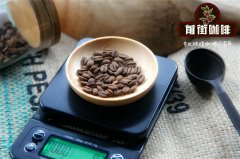Known as "Coffee in the wilderness" and "one of the most perfect Sun Coffee"-Harald

Professional coffee knowledge exchange More coffee bean information Please pay attention to coffee workshop (Weixin Official Accounts cafe_style)
"Mocha" as one of the world's earliest and once the largest coffee trade port and civilization in the world, located in Ethiopia across the Strait of Yemen, Ethiopia's coffee has also been exported through Yemen Mocha port, now Mocha port has dried up, but the coffee produced in the vicinity is still used to call it mocha.
Harar coffee is grown in areas ranging from the Darolebu plains at an altitude of 900 meters to the Chercher mountains in the eastern Ethiopian highlands at an altitude of 2700 meters. These mountains do provide unique characteristics to these perennial coffee beans: full, elongated fruit, moderate acidity, and typical mocha flavor. Harar Coffee The world's leading quality coffee; although the variety is produced abroad, it gives a warm feeling, smooth and sweet taste, giving people the rich taste of real mocha coffee. Harald coffee has almost the lowest caffeine content, about 1.13%.
Harald is not only one of the best sun-baked coffees in the world, known as the "coffee of the wilderness", but more like a beautiful legend.
Ethiopia is mainly Arabica seed; exports raw beans; uses drying and washing methods of processing; mainly concentrated in the southwest, east and south; August/January harvest each year; Sumatra Mantenin Mantenin is a fine coffee bean grown in the plateau mountains at an altitude of 750 - 1500 meters. In the 17th century, the Dutch first introduced Arabica seedlings to Ceylon (today's Sri Lanka) and Indonesia. In 1877, a massive disaster struck the Indonesian islands, and coffee rust destroyed almost all the coffee trees. People had to abandon Arabica, which had been in business for many years, and imported Robusta coffee trees from Africa. Indonesia today is a major coffee producer. Coffee is mainly grown in Java, Sumatra and Sulawesi, with Robusta species accounting for 90% of total production. Sumatra mantenin is a rare arabica species. Planted on hillsides between 750 and 1500 meters above sea level, the mysterious and unique Sumatra species gives mantnin coffee its rich aroma, rich taste, intense flavor, slightly chocolate and syrupy notes.
Important Notice :
前街咖啡 FrontStreet Coffee has moved to new addredd:
FrontStreet Coffee Address: 315,Donghua East Road,GuangZhou
Tel:020 38364473
- Prev

This is a different fish.
Professional coffee knowledge exchange more coffee bean information please follow the coffee workshop (Wechat official account cafe_style) this batch of AA coffee fruits are picked and processed by 250 farmers in the Kongyu processing plant under the jurisdiction of the Kabare farmers' cooperative. After peeling, fermenting and cleaning the coffee from the nearby Kongyu River, the coffee will be used in an African drying bed for drying. Every one of them.
- Next

Description of EU+NOP flavor of sun-dried beans in Saquarema Farm, South Minas, Brazil
Professional coffee knowledge exchange more coffee bean information please follow the coffee workshop (Wechat official account cafe_style) Brazil South Minas Saquarema farm sun beans EU+NOP coffee was first introduced to Brazil in the early 18th century, in 1727 the Brazilian government sent a personable army officer to mediate the border dispute, secretly brought coffee seeds from French Gaiana back to Brazil
Related
- Detailed explanation of Jadeite planting Land in Panamanian Jadeite Manor introduction to the grading system of Jadeite competitive bidding, Red bid, Green bid and Rose Summer
- Story of Coffee planting in Brenka region of Costa Rica Stonehenge Manor anaerobic heavy honey treatment of flavor mouth
- What's on the barrel of Blue Mountain Coffee beans?
- Can American coffee also pull flowers? How to use hot American style to pull out a good-looking pattern?
- Can you make a cold extract with coffee beans? What is the right proportion for cold-extracted coffee formula?
- Indonesian PWN Gold Mandrine Coffee Origin Features Flavor How to Chong? Mandolin coffee is American.
- A brief introduction to the flavor characteristics of Brazilian yellow bourbon coffee beans
- What is the effect of different water quality on the flavor of cold-extracted coffee? What kind of water is best for brewing coffee?
- Why do you think of Rose Summer whenever you mention Panamanian coffee?
- Introduction to the characteristics of authentic blue mountain coffee bean producing areas? What is the CIB Coffee Authority in Jamaica?

